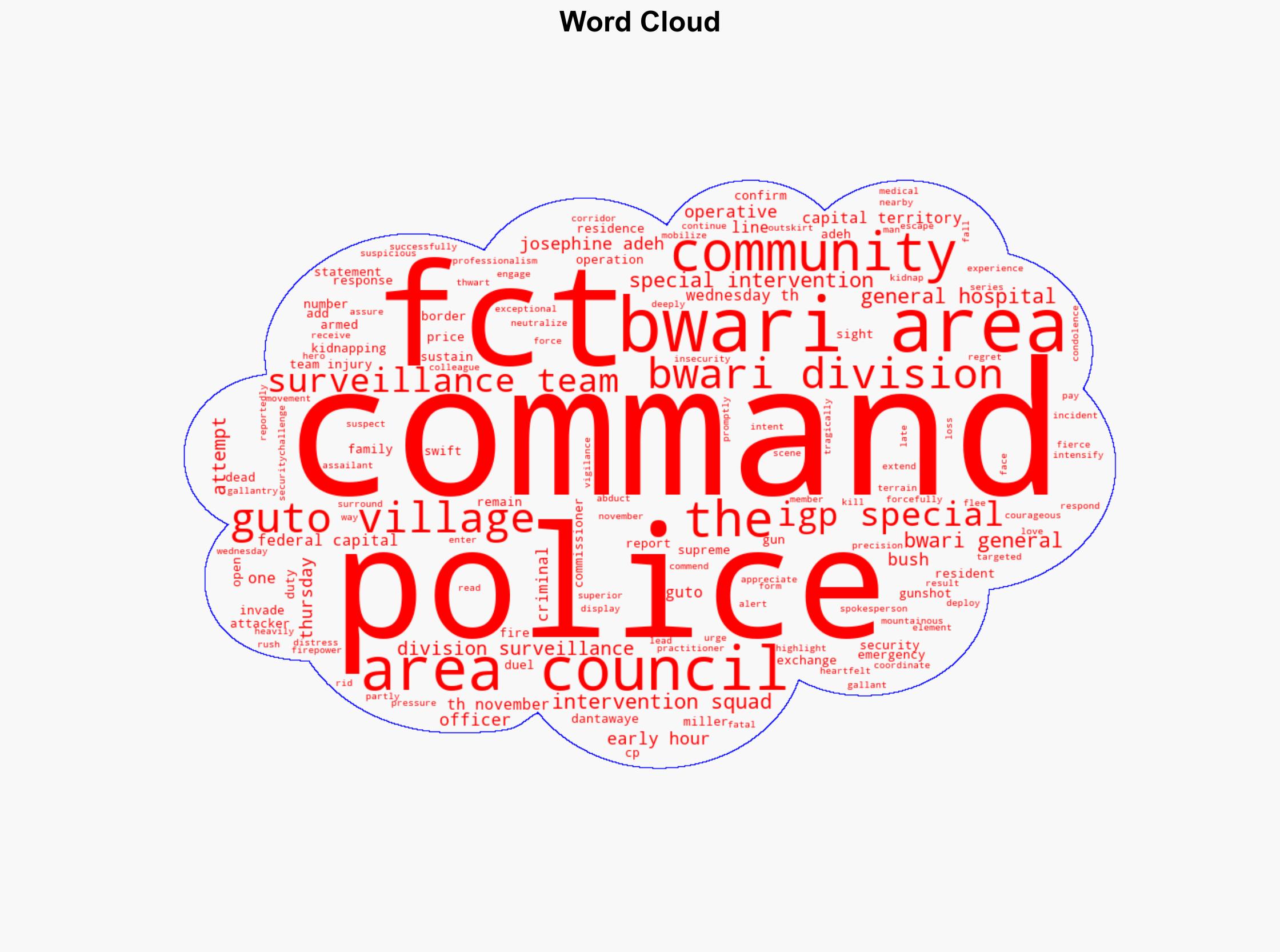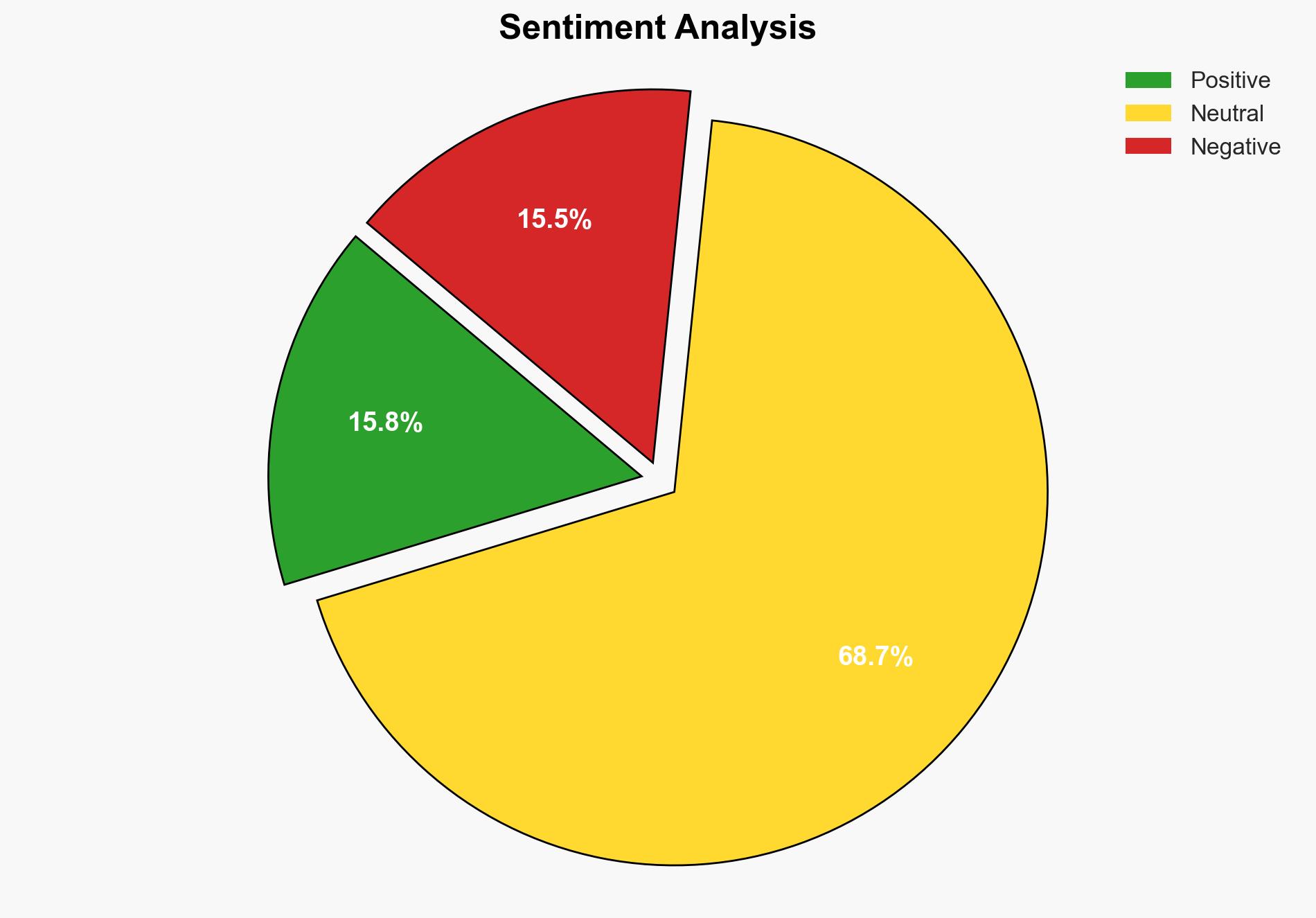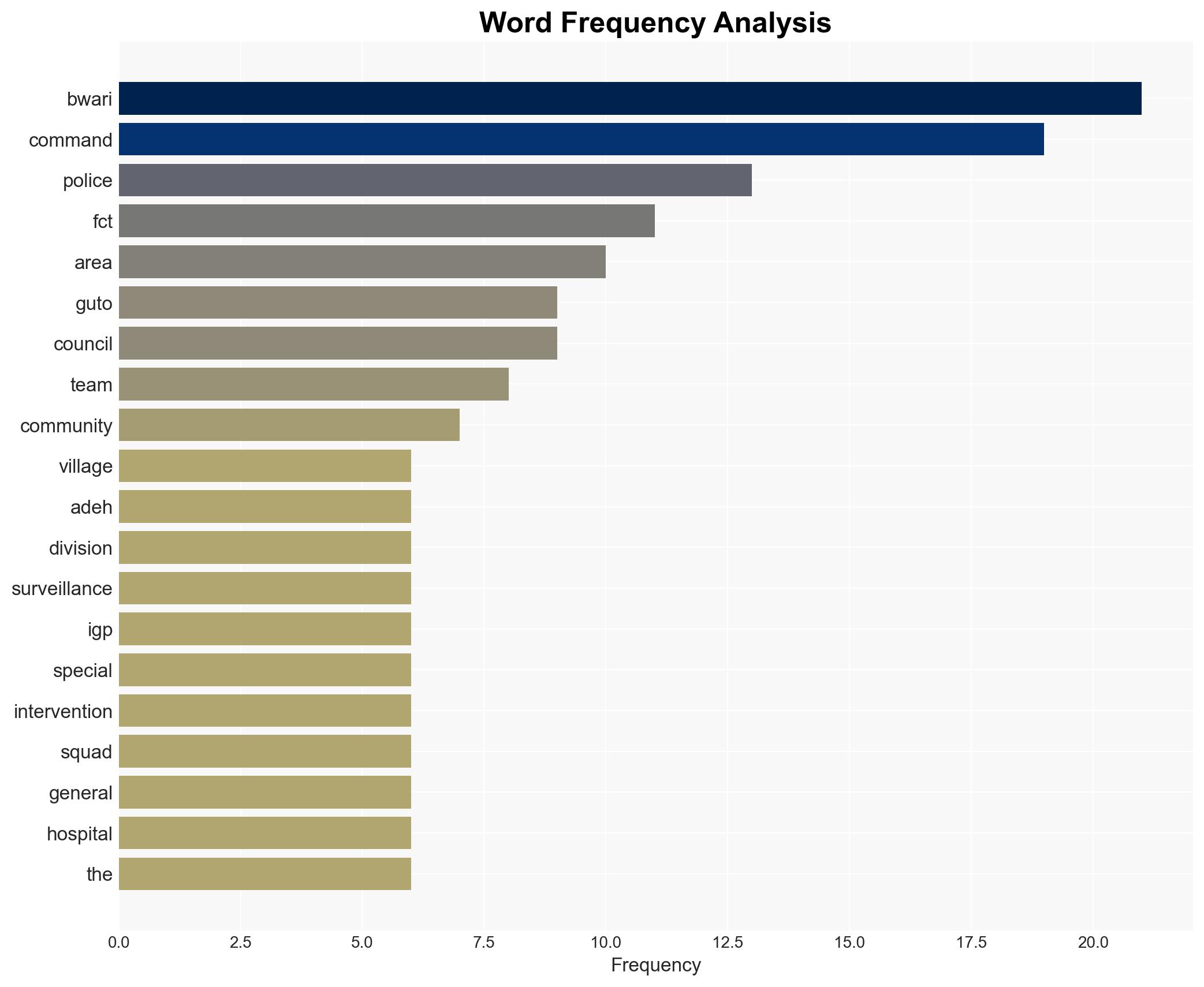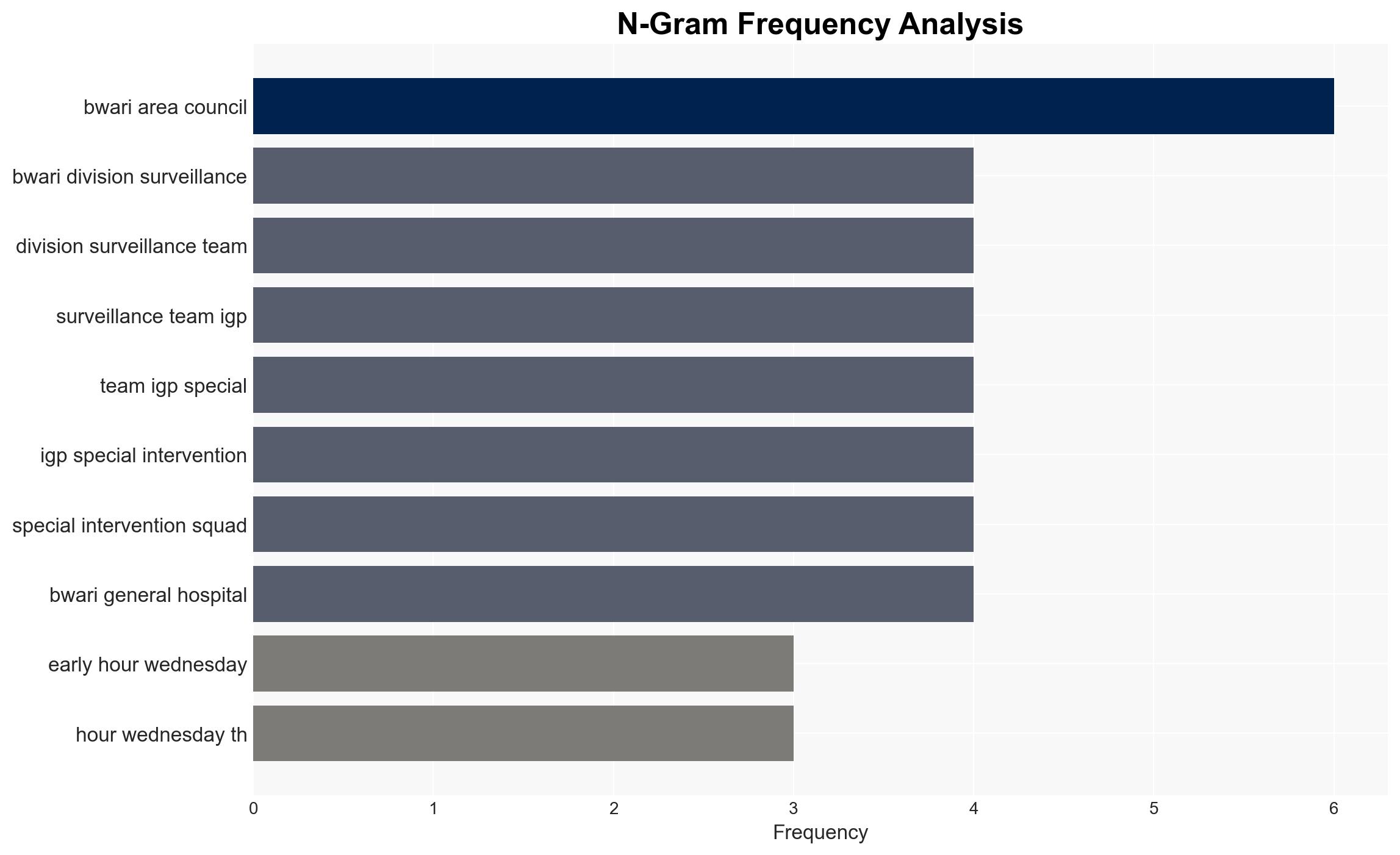Officer killed as police foil kidnapping attempt in FCT – The Punch
Published on: 2025-11-20
AI-powered OSINT brief from verified open sources. Automated NLP signal extraction with human verification. See our Methodology and Why WorldWideWatchers.
Intelligence Report:
1. BLUF (Bottom Line Up Front)
The most supported hypothesis is that the kidnapping attempt in Guto Village was part of a broader pattern of organized criminal activity targeting vulnerable communities on the outskirts of the Federal Capital Territory (FCT). This assessment is made with moderate confidence due to the recurring nature of such incidents and the tactical response by police forces. Recommended actions include enhancing intelligence gathering and community engagement to preempt future attacks.
2. Competing Hypotheses
Hypothesis 1: The incident was an isolated criminal act by a local gang seeking ransom through opportunistic kidnapping.
Hypothesis 2: The incident is part of a coordinated series of attacks by a larger organized crime network targeting border communities in the FCT to exploit security vulnerabilities.
Hypothesis 2 is more likely due to the reported involvement of heavily armed assailants, the tactical response by police, and the history of similar incidents in the region, suggesting a pattern rather than isolated events.
3. Key Assumptions and Red Flags
Assumptions: It is assumed that the attackers’ primary motive was financial gain through ransom. The police report is assumed to be accurate and comprehensive.
Red Flags: The attackers’ ability to evade capture and retreat into the bush indicates potential familiarity with the terrain and possibly local support or intelligence.
Deception Indicators: There is a risk that the attackers may have used diversionary tactics to mislead security forces about their true intentions or future targets.
4. Implications and Strategic Risks
The recurring nature of such attacks poses a significant threat to regional stability and public confidence in security forces. There is a risk of escalation if criminal networks perceive a lack of effective deterrence, potentially leading to increased violence or targeting of more strategic assets. Politically, persistent insecurity could undermine governance and erode trust in public institutions.
5. Recommendations and Outlook
- Actionable Steps: Increase intelligence operations in border communities to identify and dismantle organized crime networks. Enhance community policing efforts to build trust and gather local intelligence. Deploy rapid response teams to high-risk areas.
- Best Scenario: Successful disruption of criminal networks leads to a significant reduction in kidnapping incidents.
- Worst Scenario: Escalation of attacks results in higher casualties and destabilization of border communities.
- Most-likely Scenario: Continued sporadic attacks with gradual improvement in police response and community cooperation.
6. Key Individuals and Entities
Josephine Adeh (Police Command Spokesperson), Commissioner of Police FCT Command Miller Dantawaye.
7. Thematic Tags
Structured Analytic Techniques Applied
- Cognitive Bias Stress Test: Expose and correct potential biases in assessments through red-teaming and structured challenge.
- Bayesian Scenario Modeling: Use probabilistic forecasting for conflict trajectories or escalation likelihood.
- Network Influence Mapping: Map relationships between state and non-state actors for impact estimation.
Explore more:
National Security Threats Briefs ·
Daily Summary ·
Support us





